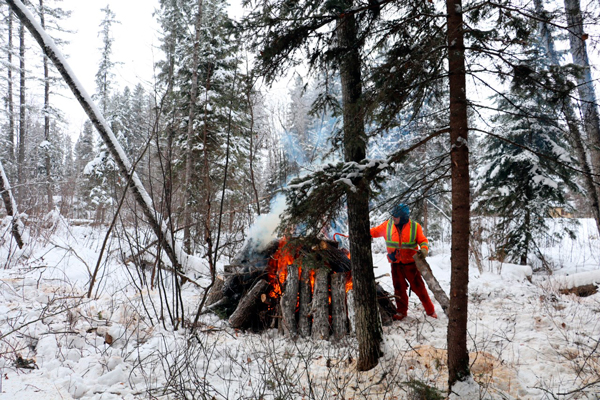
The Prince Albert National Park is working on a new fuel reduction area in the Waskesiu townsite.
The park’s wildfire preparedness dates back to 2001, when it established a 320-hectare community fuel break. It runs from the Kapasiwin area on the north shore of Waskesiu all the way to the south side of the golf course.
Now, the park is working on a four-hectare area at the intersection of Waskesiu Drive and Ajawaan Road within the town.
“Inside (of the) townsite, we have some areas we’ve identified that may increase the risk to the townsite if there’s a wildfire,” said Fire Management Officer Glenn Rupert.
“Our targeted species in Waskesiu is mostly spruce and pine. Those are the conifers, and the reason we have to remove those is that’s the trees with needles on them and they’re the most volatile during a wildfire because of the resins in the needles.”
He added conifer trees also create the most spotting—when a fire produces sparks or embers that are carried by the wind to start new ones.
On the other hand, said Rupert, crews will leave deciduous trees such as willow, birch and aspen.
“Generally there’s more moisture in the leaves and they can actually help to slow fire spread and bring fire to a surface where we have a better chance to control it.”
Some areas of the fuel break, he explained, must be maintained annually. This includes the main part of the fuel break, a 40-hectare area south of the golf course, where they set a prescribed wildfire every spring.
For the rest, they follow a 10 to 20-year maintenance plan.
“One of the greatest challenges with maintaining a fuel break is the conifer regeneration, so we really have to reduce that to maintain the effectiveness.”
There’s several reasons crews do this maintenance work in the fall and winter. This includes working around migratory bird nesting, said Rupert.
It’s also more convenient because they can burn the unwanted trees on site in the winter, in addition to having less visitors in the colder months.
Rupert encouraged cabin owners to follow FireSmart Canada principles.
FireSmart Canada says to steer clear of wooden fences and board walks, ensure the siding on your home doesn’t have any gaps where embers could accumulate and to create a non-combustible zone at least one and a half metres around your home’s foundation.
For more information on how to prevent the spread of a wildfire, visit firesmartcanada.ca.

